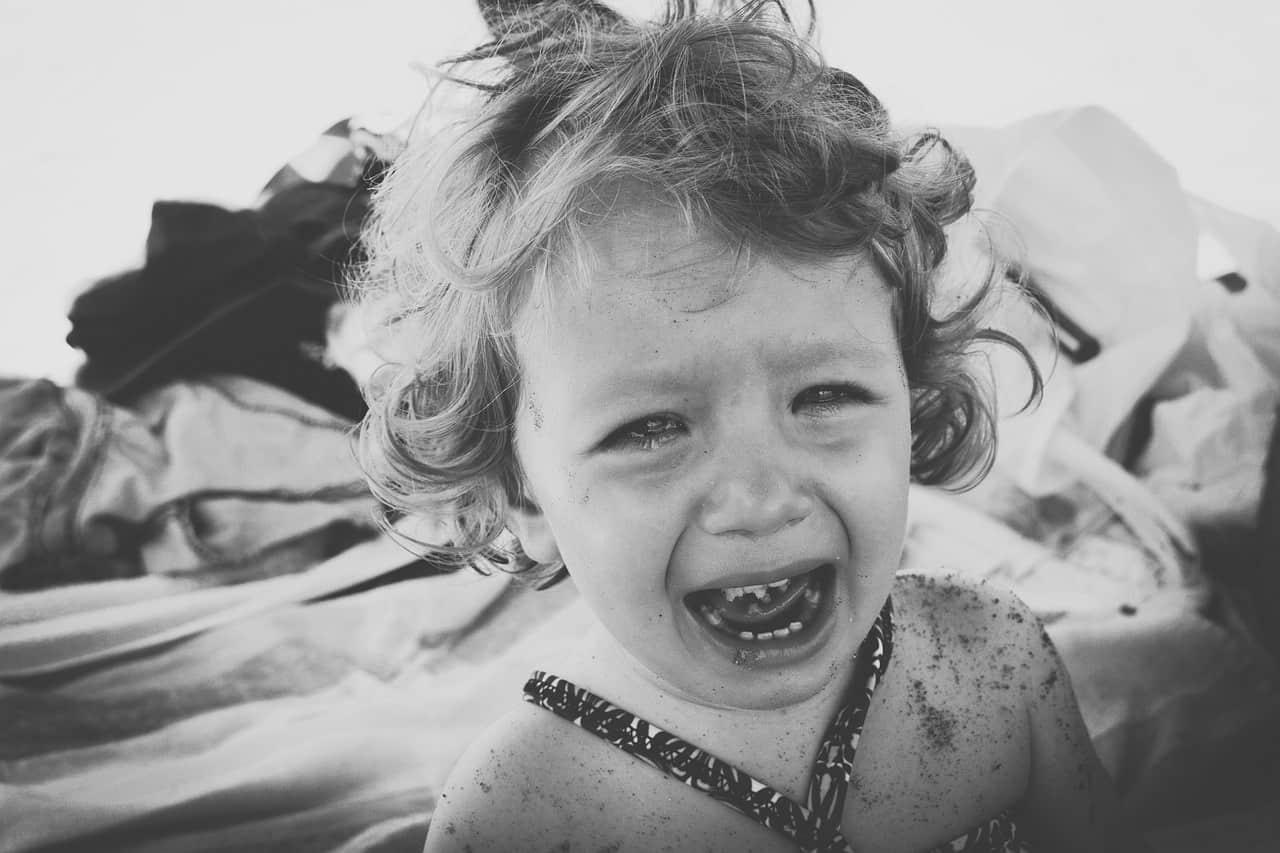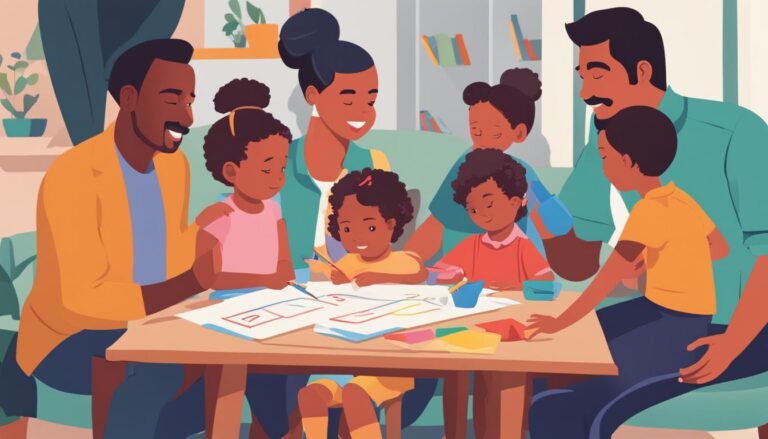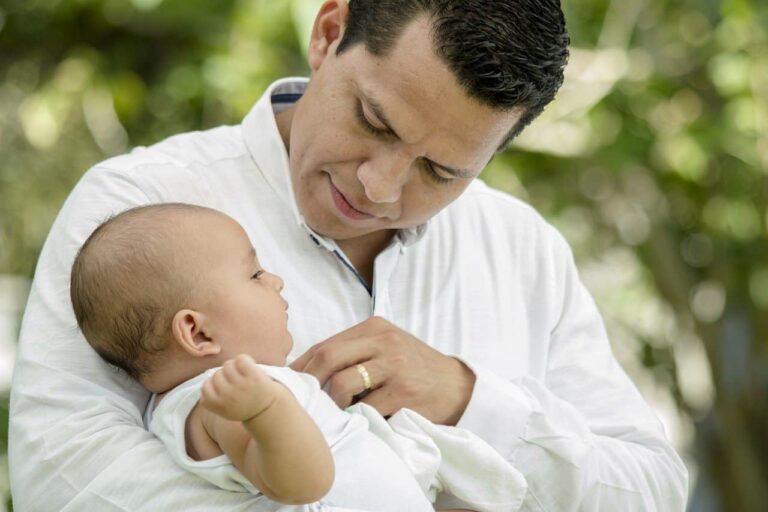How to Deal with Temper Tantrums from Infancy up to 6 Years Old
Picture this: You’re out on a grocery shopping trip with your child. While picking out which tea you want to buy, your kid finds the candy aisle. And on the top shelf is their favorite chocolate bar.
They want that bar, so they ask you to buy it for them. But you know better than to give them sweets too often, so you say no. Instead, you offer to buy them something healthier, like an apple or some berries.
But you can see it in their face that they aren’t having any of it. “But I want that chocolate!” Your child stomps their feet and crosses their arms.
You try to reason that chocolate is not good for them. You promise that they will have chocolate later in the year. But all your promises fell on deaf ears as your kid starts crying.
“Chocolate now! I want chocolate now!” And much to your embarrassment, your child’s antics are making people turn their heads towards you. In the end, nobody is happy.
No parent wants to be stuck in a situation like this. The judgemental looks, the screaming of your kid, and the embarrassing walk to the exit can really be an ego-downer. But for some parents, tantrums are a part of daily life.
While it feels like you’re doing something wrong, tantrums are not caused by bad parenting. In fact, some of the best parents in the world can also have the rowdiest children. Rather, temper tantrums are a result of a child’s development.
You may have found yourself sitting in the car park while your child cries about a toy they wanted or a show they missed. And you asked yourself, “What do I do now?” Fortunately, you can do more to help your child overcome their emotional troubles.
Parents can do their part to learn what tantrums are and how to control them. Plus, you don’t have to worry about future tantrums when you follow some simple pointers. Learn more about tantrums as you read through this article.
What is a Tantrums
Before we try to tackle how to fix them, let’s first learn about them. Tantrums are emotional outbursts that are caused by unmet wants and needs. Tantrums are often characterized by disorganized emotions such as anger and frustration.

Different children have different forms of tantrums. Some will run around the place, others will hold their breath, and a few will toss and turn on the ground. What all of these have in common is that they are often destructive and aggressive.
You’ll start seeing tantrums at around ages 12-18 months. At 2-3 years, these tantrums can get worse. This is where the colloquial term ‘terrible two’ comes from.
But as children age, their tantrums gradually become less frequent. But it’s not to say that they will never have tantrums. Some triggers like hunger, fatigue, and sickness can cause untimely temper tantrums.
Why Do Kids Have Tempter Tantrums?
During their first few years, young children are still developing emotionally. Their social and emotional abilities are still being shaped and molded. So when big emotions like anger and fear come, they will not have the right response to handle these situations.
Children use tantrums as a way to express unwanted emotion. They are still too young to understand any coping mechanism when they feel stressed or pressured. So their feelings become outbursts.
Certain factors play a role in why children have tantrums. A child’s temperament plays a big role in how they react to events. Children’s temperament is something that they are born with. Some children are more likely to cause tantrums than others because of how they respond to their environment.
Another thing that can cause tantrums is the environment itself. Stressors can cause tantrums in children. Certain situations and events can also trigger a tantrum response within children.
Finally, there are the children’s wants and needs. Tantrums usually occur when a child needs or wants something but does not receive it. This can trigger negative emotions in them.
The Different Kinds of Tantrums
There are different kinds of tantrums, all based on a few different scenarios.
First, children can have tantrums due to fatigue or frustration. They can find a task too hard or too tiring. In which case, they will throw a tantrum because they want it to stop.
Next, children can throw a tantrum because they want attention. Attention-seeking and demanding tantrums are done because they want something and want it fast. They might want to play or have something from the store, even if the demand is unrealistic.
They can also throw tantrums because they refuse to do something. Their favorite word is ‘NO!’ and they will use it non-stop. They will refuse to do chores, go to the store, or put on their new fluffy socks.
Finally, they can have destructive or rageful tantrums just because. Something has surely triggered them to be angry and disruptive. Most likely, you will see them screaming or losing physical control.
If you are interested in learning more about these tantrums and their remedies, you can visit HealthDay’s article right here.
The Tantrum Timeline: From Infancy to School Age
Tantrums can vary from age to age. While younger kids tend to have more emotional outbursts, older kids are no exemptions.
From birth, children are continuously developing their communication skills. They are also shaping their emotions based on their environment. And during this process, parents will encounter negative development alongside positive ones.
Ages 0-1: Infancy
During this stage of life, infants are unable to communicate with speech. Instead, they rely on non-verbal actions to gain attention from their parents. The most common form of communication is through crying.
Infants cry for their needs to be met. They cry when they are hungry, sick, or need attention. For the most part, this is the only way infants can communicate.
While it is not similar to throwing a tantrum, this trait of crying will be passed on in later years. Once infants turn to toddlers, they will still use crying as a way of communication. This is especially true if they have not yet mastered verbal communication.
Age 1-3: Toddler
During these years, toddlers are discovering their independence and environment. This is also when they discover bigger emotions. Toddlers are more likely to throw tantrums during this age range because of their heightened awareness.
Toddlers are still practicing their verbal communication during this time. They are also yet to be introduced to healthy coping mechanisms. That’s why they frequently throw tantrums when their needs are not met.
Toddlers also brought their tendency to cry for attention from when they were infants. The difference now is that they have more motor skills. That’s why they can also kick, trash, and run around during outbursts.
Age 4-6: Preschooler
During this stage, children are less likely to throw temper tantrums. Their emotional and social skills have matured compared to previous years. During this time, parents have most likely taught coping mechanisms to their children.

Other older children will also come as role models. Adults like teachers can also intervene and teach discipline. Furthermore, kids will learn to compromise with others. They will also have a better grasp and control over their emotions.
This timeline is, in no way, the same for every child. Some children will have a better temperament when compared to others. This means that in some scenarios, some children are less likely to throw tantrums than others.
On the other hand, some children will have a harder time outgrowing their tantrum tendencies. Some might have tantrums at ages later than 4 years. Usually, these children might need more intervention and emotional support.
Other times, children might not even be experiencing a tantrum. Rather, what they are experiencing are overstimulation and meltdown.
What Are The Main Difference Between a Tantrum and a Meltdown?
A meltdown may look similar to a tantrum. Children will experience similar symptoms of withdrawal, anger, and frustration. They may also act defiant and unable to reach.
But meltdowns are comparably different from tantrums. Tantrums usually happen when children don’t get what they wanted or needed. Unlike meltdowns, children can control tantrums and choose when to stop.
On the other hand, meltdowns are caused by overstimulation of the senses. This occurs when the brain can’t comprehend all the information it is being given at once. Too much stimulation can cause sensory overload and meltdown.
Unlike a tantrum, children can’t stop when they have a meltdown. They are also unresponsive to any sort of reward.
Children can both have tantrums and meltdowns. But meltdowns and overstimulation are more common in those with certain conditions. These conditions include autism, ADHD, and PTSD.
What makes both a tantrum and meltdown similar is how parents must respond. Parents must approach the situation with care, patience, and calmness. A child having either a tantrum or meltdown must be taken out of the situation and calmed down.

How to Deal with Temper Tantrums for Ages Up to 6 Years Old
We now have established what a temper tantrum is and its causes. Let’s now discuss what to do during a tantrum and to prevent one in the future.
Tantrums can feel intimidating, especially when older children do them. But rest assure these tips can work on both younger and older children. In the end, you will feel more confident when it comes to dealing with unruly children.
What To Do During a Temper Tantrum
Let’s go back to our scenario from the beginning. You are in the grocery store with your child throwing a tantrum over a chocolate bar. Here are some things you can do to curb their emotions.
Offer Them a Distraction
If you still have a chance to talk your child out, try and distract them. Give them something that they can get interested in. Offer them a toy or a healthier snack that they like.
Keep them busy to deter their negative emotions. However, if none of them work and your child starts to have an outburst, move to the next steps.
Do Your Best to Stay Calm
Losing your cool during this time can make things worse. Getting angry, scolding your child, or continuously probing them will aggravate their emotions. Try to wait out your emotions for later.
Right now, your child does not want to listen to you. What you can do is escort them away if you can. You should also keep your voice as low and stable as possible.
DON’T Scream or Hit Your Child
Never use violence when dealing with a child while having a tantrum. Corporal punishment does not discipline a child. Instead, it teaches them that violence is an okay solution.
Scolding and hitting your child in public can also lower their self-esteem. Any sort of public humiliation and punishment can cause trauma to young children. Try your best to control your anger, both in private and in public.
Keep an Eye On Them
If your child is running around the grocery store and causing disruption, try to keep an eye on them. Make sure that you can see your child and they can see you.
Public spaces are dangerous, especially for young and vulnerable children. Strangers can easily get a hand of them. Children can also get lost in a massive crowd.
Likewise, children can also injure themselves or others during their tantrum. So they need an adult watching over them.
Get Them Away From Danger
Children can hurt themselves during a tantrum. They can also hurt other people around them during their outbursts. The best thing parents can do is hold on to their children.
Parents should also remove them from the public and bring them to a safe space. Here, parents can calm their children down.
Once you’re in a private space like a bench or a car, try to calm your child down. You can distract them with a toy or talk to them reassuringly. Later on, your child will relax and listen.
DON’T Give Into Their Demands
It can be tempting to give in and hand them that chocolate bar. But giving in to your child’s demands will justify their tantrum. They’ll start using their tantrums as a way to get whatever they demand.
Do what you can to calm your child down. Just don’t give them what they want. Calm them down and shift their attention to something else.
What To Do After a Temper Tantrum
Let’s say you have successfully removed your child from the situation. You bring them someplace quiet, like in the car or food court. Your child has finally calmed down and can listen to you.
What do you do now? Obviously, you don’t want to sweep everything under the rug. You want to correct your child’s misbehavior and discipline them in some way.
Whether you are in public or private, you can do these steps once the tantrum has subsided.
Converse With Your Child, Not Scold Them
You and your child have just gotten off a rollercoaster of emotions. The last thing anybody wants to hear after an outburst is a scolding. Immediately lecturing your child after the high can re-trigger a tantrum.
Instead, approach your child and civilly talk to them. Ask them how they are feeling. Make them feel comfortable after their outburst.
Slowly open them up so that they can reciprocate your words. Once you know they are calm, you can do some talking as well.
Praise Your Child for Calming Down
Positive reinforcement is an amazing strategy to make kids disciplined and heard. Children like to hear positive things being said towards them.
You will want to praise your child with something specific. For example, praise them for being able to calm themselves down. Or you can praise them for not hurting themselves or not screaming while in the store.
Find any good behavior that you want to reinforce. They will focus on improving the positive things rather than dwelling on the negative ones.
Connect to Them Emotionally and Help Them Understand Their Emotions
Your child was feeling frustrated, and you know why. That’s why you must acknowledge their inner turmoil. Empathize with their anger and irritation, This can give ease and point your child in the direction of emotional understanding.
Your child is probably confused by all the big emotions that are going through their mind. It can help immensely if you pinpoint and verbalize these emotions with them. And once they are aware of these emotions, then you can teach them more about them.
Guide them to find a healthy coping mechanism for when they are upset. Once they are aware of their feelings and how to cope, they will become more independent. They will be capable of solving their own problems.
Be A Model That Your Child Can Follow
Finally, do the things that you have taught them. Children look up to their parents. When your child sees you coping with your upsetting emotions healthily, they will follow suit.
This will not be the first time your child is going to encounter upsetting emotions. In the future, your child will experience more painful and distressing situations. And most of them will be more complicated than just wanting a chocolate bar.
How To Prevent Future Temper Tantrums
Situations in the future will come, and your child might throw another tantrum. It can be over simple things like not wanting to wear their dress. But it can also be because of more complicated issues like not wanting to go to school.
Parents need to help their children find balance in their emotions. Here are some ways that can help prevent further tantrums in later times.
Continue Using Positive Reinforcement
Reward any good behavior and right conduct. Praise them for things such as cleaning their room or following orders. They will repeat these actions until they become a habit. This will also deter them from feeling negative and cranky emotions.
Make A Request, Not a Command
Your child can throw tantrums when they feel like they are being controlled. Instead of commanding and using threats, make your request sound like an invitation.
Use a friendly tone when addressing your child. The less threatening you sound, the more likely your child will follow you.
Give Your Child A Sense of Independence
Do you battle over the tiniest of issues, like which sock to wear or which color of paper to use? It’s better to give your child a choice rather than dictating what you want. A sense of decision-making will make your child more likely to engage in something. It’s also better to save the orders for something more serious, like not touching the stove or not playing in the middle of the street.
Help Them Shape Their Emotions
Continue to guide your child in their emotional journey. There will be times when giant feelings like anger and frustration will come. When you sense something wrong, offer a helping hand.
As your child ages, they will be introduced to more stressful problems and situations. School, social events, and friends can all contribute to their growing spectrum of emotions. Guide them in their path and help them realize a more healthy way of dealing with their feelings.
Keep An Eye On Your Child’s Physical Needs and Limits
Finally, keep an eye on your child’s physical needs, like their eating and sleeping. Fatigue and hunger can sometimes be a trigger for outbursts and tantrums.
Check on your child if they have eaten properly or have slept enough. If you notice that you or other people are pressuring your child, let them step back and rest. Allow them to have a break every once in a while.
When To Seek Professional Help
For most children, tantrums usually die down when they get older. They gain a sense of self-control, and they have more support systems around them. This normally happens when children are already going to school and are surrounded by teachers and classmates.
However, some children do not outgrow their tantrum tendencies. If tantrums are getting worse as the child grows, parents should get help from a professional.
The American Academy of Pediatrics recommends parents to seek help for their children under certain conditions:
- Tantrums worsen when the child is age 4 and above.
- The child injures themselves or others during their tantrum. For example, they hold their breath to the point of fainting.
- The child causes property damage during their tantrum.
- The child has symptoms including nightmares, headaches, stomachaches, clinginess, and wetting themselves.
Certain conditions can cause some issues to a child, leading to tantrums. Although uncommon, hearing problems, vision problems, learning disabilities, and chronic illnesses can play a role in a child’s self-development.
Therapy is done to lower aggression and tantrums in children. Healthcare professionals can use Parent-child Interaction Therapy or Parent Management Training. These therapies have shown to be effective and can improve children’s self-esteem and compliance. They can also help improve parent-child relationships and bonds.
Conclusion
You sit your child down, who has finally relaxed and have overcome their outburst. You feel more confident after you have successfully override a tantrum.
Tantrums are a part of a child’s development and emotional growth. Young children are still in an early stage of life, and they can’t express themselves as adults do. That’s why they rely on crying, screaming, and trashing to express negative emotions.
Unlike a meltdown from overstimulation, children can control their tantrums. They have the ability to start one and end one. So parents should find a way to direct them into ending their tantrums.
If you find yourself in a position where your child is having a tantrum, just stay calm. Getting heated and emotional will only aggravate the situation. Instead, control your emotions and focus on calming your child down.
Go somewhere safe and quiet. Let your child release all the anger and frustrations out. And once they have calmed down, then you can talk to them.
Talking to your child is one of the best ways to solve a tantrum. Instead of scolding and turn the conversation one-sided, listen and engage with your child. You will soon find a way for your child to cope with negative emotions more healthily.
There is no guarantee that your child will not throw a tantrum again. But instead of trying to focus on the negative, you can use positive reinforcement to train your child. Maintain a positive relationship with your kid, so they won’t fall into the trap of anger and frustration.
The day is coming to an end. You and your child have finished grocery shopping. And as you walk out of the store, you realize that tantrums aren’t so bad when you know what to do.
Your toddler is happy and excited about tonight’s dinner. Their aura is a lot happier and less frustrated. You, as a parent, have done a good job helping your child overcome their tantrums.
Pretty soon, this thing will be nothing more but a story to laugh about. In fact, maybe your child would never remember why they were so angry in the first place.









